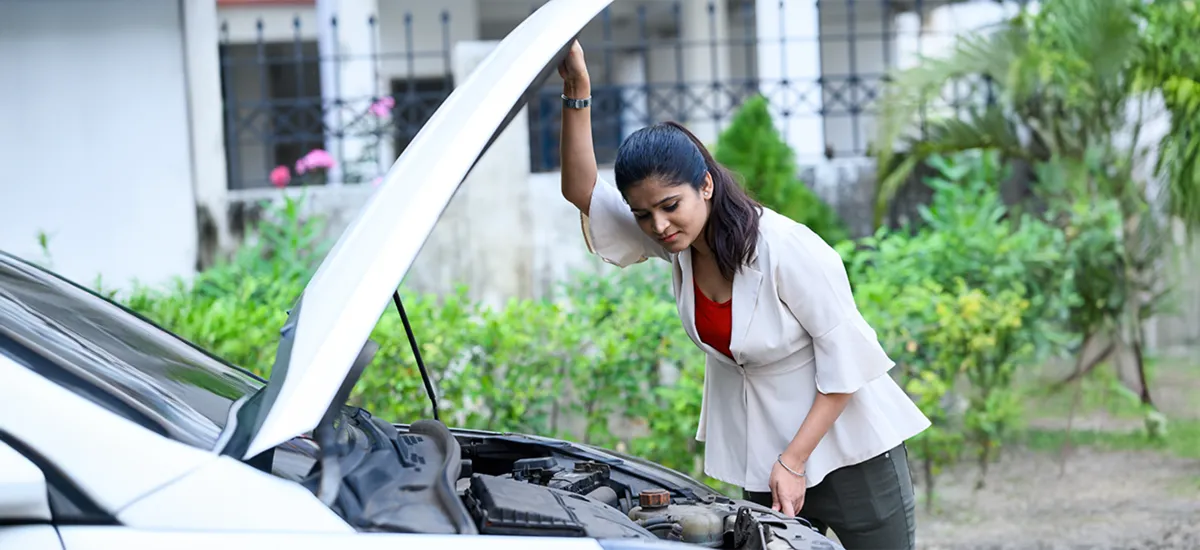Did you know that in India, nearly 60% of vehicles are uninsured? Furthermore, data from the Ministry of Road Transport and Highways shows that uninsured vehicles account for a significant portion of financial disputes post-accidents.
Buying your first car is a milestone, but with great pride comes the responsibility of protecting your vehicle. Motor insurance isn’t just a legal mandate in India; it’s a financial shield against accidents, theft, and unforeseen expenses. For first-time car owners, understanding the details of motor insurance can feel like navigating a labyrinth. This guide demystifies the essentials, equipping you with the knowledge to make informed decisions.
How to choose the right motor insurance policy
Buying car insurance requires a keen understanding of its nuances and thorough research of the insurers and the benefits offered. Here are five handy tips to help you make the best choice.
Step 1: Examine the coverage offered
Not all insurance policies are created equal. The breadth of coverage varies significantly between third-party liability and comprehensive policies.
· Third-party liability: This is the minimum legal requirement in India. It covers damages caused to a third party—be it their vehicle, property, or physical injury. However, it does not cover the damages to your car.
· Comprehensive insurance: This type of policy offers wider protection, covering third-party liabilities and damages to your vehicle caused by accidents, natural calamities, or theft.
Always scrutinise the inclusions and exclusions in the policy document. The last thing you want is a surprise when filing a claim.
Step 2: Insurance premium and Insured Declared Value: Understand the difference
Understanding the relationship between your premium and your car’s Insured Declared Value (IDV) is important.
· Insurance premium: This is the amount you pay annually to keep your policy active. A lower premium might seem attractive, but it often comes at the cost of reduced coverage.
· Insured Declared Value (IDV): Insured Declare Value represents the current market value of your car and is the maximum amount your insurer will pay in case of total loss or theft. While a lower IDV can reduce your premium, it also decreases the payout during claims.
Striking the right balance between a reasonable premium and adequate IDV is essential for optimal coverage.
Step 3: Strengthen your coverage with add-ons
Add-ons are optional covers that enhance your policy’s robustness. For first-time car owners, a few add-ons are particularly beneficial:
· Zero depreciation cover: Zero Depreciation Car Insurance ensures full claim payout without accounting for depreciation on replaced parts.
· Roadside assistance: Provides services like towing, fuel delivery, and on-spot repairs during breakdowns.
· Engine protection cover: This covers damages to your engine caused by water ingress or oil leaks.
· Return to invoice: In case of total loss, this add-on ensures you receive the car's invoice value rather than its depreciated value.
Investing in relevant add-ons can provide peace of mind in times of crisis.
Step 4: Voluntary deductibles
Voluntary deductibles are the amount you agree to pay out of pocket before your insurance kicks in during a claim.
· Lower premiums: Opting for a higher deductible reduces your premium.
· Consider financial preparedness: While this can lower costs, ensure you’re financially ready to cover the deductible amount during claims.
First-time car owners should weigh the trade-off between upfront savings and potential expenses before opting for voluntary deductibles.
Step 5: No Claim Bonus (NCB)
NCB is a reward for not filing a claim during the policy period, and it significantly impacts your premium.
· Savings potential: Every claim-free year earns you a discount on the renewal premium, ranging from 20% in the first year to a whopping 50% after five consecutive claim-free years.
· Transferable benefit: NCB is linked to the policyholder, not the vehicle. If you sell your car, you can transfer the accumulated NCB to your new policy, ensuring uninterrupted benefits.
Preserving your NCB by avoiding minor claims can lead to substantial savings over time.
In closing
Motor insurance is more than just a regulatory requirement; it safeguards your financial well-being. By understanding the key aspects—coverage options, IDV, NCB, add-ons, and deductibles—you can tailor a policy that aligns with your needs. Investing time in research and choosing the right lender saves you from financial stress in the long run.
Generali Central provides you with comprehensive motor insurance that fits your budget and requirements just right. You can contact their team for expert guidance.
FAQs
1. Is third-party insurance enough for first-time car owners?
While third-party insurance meets legal requirements, it doesn’t cover damages to your vehicle. Comprehensive insurance offers broader protection and is a better choice for first-time car owners.
2. Are add-ons necessary for all car owners?
Add-ons enhance coverage but aren’t mandatory. Assess your driving habits, car usage, and risk factors to choose the most relevant ones.
3. How can I maintain a low premium without compromising coverage?
Opt for a higher voluntary deductible, preserve your NCB, and avoid unnecessary claims to keep premiums low without sacrificing coverage quality.
4. Can I transfer my No Claim Bonus (NCB) if I switch insurers?
Yes, you can transfer your NCB to a new insurer when you renew or switch your motor insurance policy. The NCB is tied to the policyholder, not the vehicle, and it remains valid as long as the renewal is done within the stipulated time, typically 90 days after the previous policy expires.
5. What happens if my car insurance policy lapses?
If your policy lapses, your vehicle will not be covered for any damages or liabilities during the uninsured period. Additionally, renewing a lapsed policy may require vehicle inspection and could result in higher premiums. It's essential to renew your policy on time to avoid such complications.




















